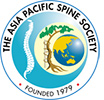Nucleoplasty is a minimally invasive procedure which is employed to reduce pressure inside the intervertebral discs to relieve neck or back pain. As no incision is made, the recovery is much faster and easier than traditional open surgery methods.
The back bone of the body is called the spine and is composed of bony segments called vertebrae which are joined together by fibrous tissue called intervertebral discs. The spine provides stability, smooth movement and also a corridor of protection for the delicate spinal cord. The intervertebral discs are made out of strong connective tissue and act as a shock absorber between the vertebrae. The outer layer of the disc, annulus fibrosis, is tough while the center of the each disc is composed of fluid matrix, called nucleus pulposus.
Under certain conditions and with increasing age, the outer disc layer may weaken, bulge or tear resulting in the leakage of the inner fluid. This is called a herniated disc and can cause pinching or compression of the spinal cord or nerve root creating severe pain in the neck or back bone of the body. Other risk factors for disc herniation include being overweight, smoking and poor body posture while lifting or performing repetitive strenuous activities.
A herniated disc can be diagnosed by physical examination, medical images and nerve studies. Depending on the location of the affected disc in the spine, pain symptoms may also be felt in the arms or legs along with numbness, tingling, and burning.
Procedure
Nucleoplasty is a minimally invasive procedure used to decompress herniated discs that have bulged but are not ruptured. Before performing PDN, the skin over the treatment area is sterilized and anesthetized. A thin tube-like cannula is inserted into the bulging disc with the help of live X-ray images from fluoroscope X-ray. Next, a small radiofrequency device is carefully inserted into the herniated disc though the cannula. The device transmits pulses of radio waves to dissolve small areas of the nucleus pulposus. This creates more space for the contents of the nucleus, which in turn reduces pressure in the disc and decreases the disc bulge.
After completion of the procedure, the cannula and the radiofrequency device are removed. As only a tiny incision is made for performing this procedure, no stitches are required and the insertion area is covered with a small bandage. After PDN procedure, the patient is sent home to rest for a week and physical therapy may be ordered by your physician depending on your type of work activity. Most patients can return to normal activities within 1-6 weeks.















